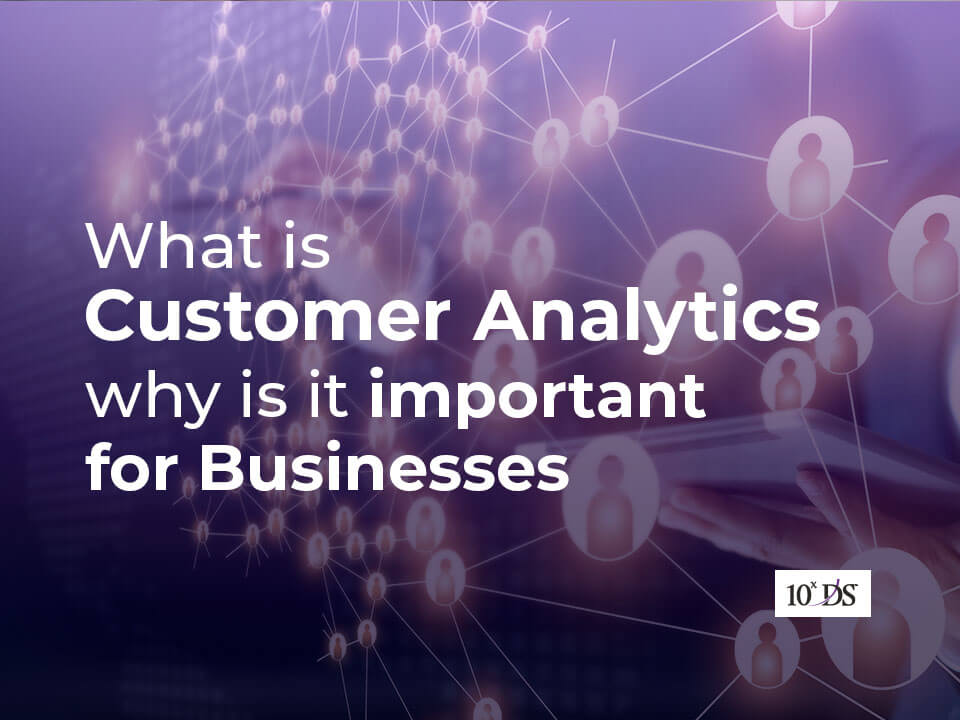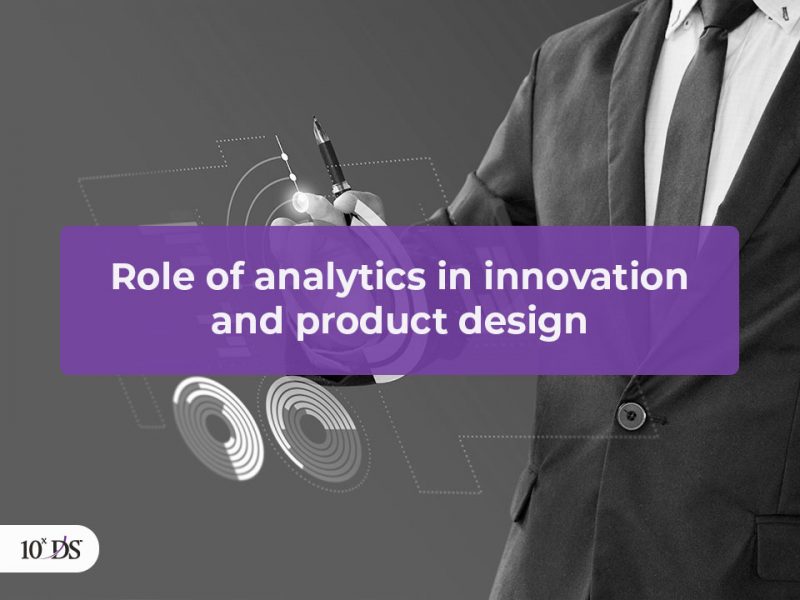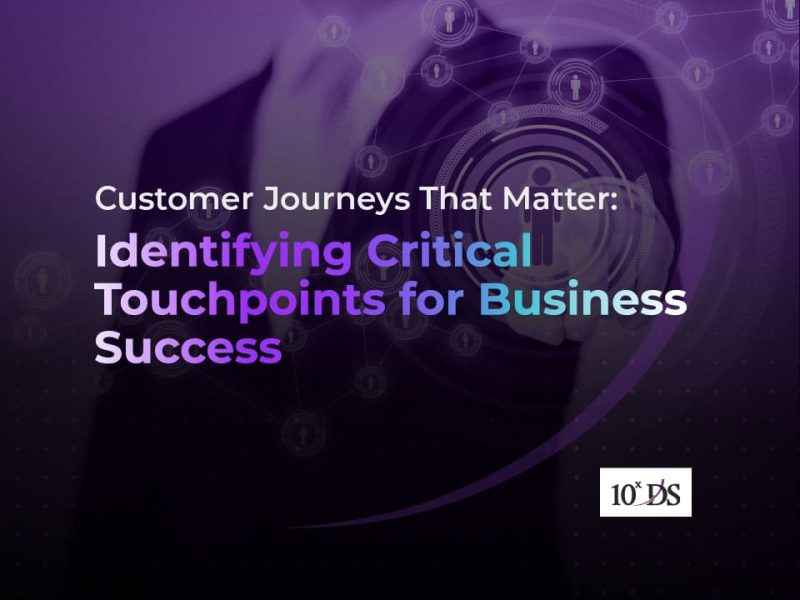
What is Customer Analytics and why is it important for Businesses
As companies expand, it is logical that their customer base also grows. Even though monitoring the activities of all these customers is difficult and precarious, knowing the patterns in the customers’ behaviours provides the necessary direction for decision-makers to plan their business strategy.
Going through this massive database of customers manually is impossible and this is where Customer Analytics comes into play. Customer Analytics as the name suggests can be broadly defined as a systematic study by which the data gathered from the customer base along with customer behaviour is used to identify, attract, and retain customers. It forms the cornerstone of business marketing strategies and key decisions by integrating advanced techniques like data visualization, predictive modelling, Information management and market segmentation.
Reasons for the importance of Customer Analytics
The more a business understands and knows its customers’ buying habits, preferred choices and the offers they respond to, the more accurately it will be able to predict their future buying patterns. According to a McKinsey & Company survey, businesses that extensively invest in customer analytics are more likely to outperform their competitors, in terms of sales, or revenue, or ROI. If a business utilizes the trail of data left behind by interacting with its customers, through Customer Analytics, this will allow it to transform the data obtained through social media and other channels into resourceful insights that can improve its profits considerably.
Customer Analytics can help a business to:
- Reduce attrition rates significantly by accurately forecasting about the time periods when customers are most likely to leave, thereby allowing you to outline proactive plans and campaigns to retain them.
- Enhance the response rates, customer loyalty, and your ROI by enabling you to target the right audience with attractive and suiting offers.
- Increase sales force effectiveness by targeting qualified prospects.
- Lower campaign costs by streamlining campaigns to target only the customer base that is most likely to respond.
- Optimize the overall customer experience by creating personalized selling and marketing strategies for different customer segments.
- Identify the current trends in Big Data to boost sales.
Factors to ensure that you derive optimal benefits from Customer Analytics
Every business should reinforce the few aspects to fully achieve the power of customer analytics:
1. Leverage Operational Excellence
According to a McKinsey & Company study, over 85% businesses stated that only when they started using customer analytics extensively that they started seeing a significant boost in value contribution from customer analytics, as compared to 20% and 30% of companies where the utilization of customer analytics was relatively low and moderate respectively which establishes the fact that businesses can only reap the benefit of customer analytics when their operations achieve a level of excellence. Hence, it is imperative for the decision-makers of a business to understand the customer analytics tools they need to invest in to bridge the gap between their current customer analytics infrastructure and advanced analytics frameworks that are being used by the industrial tycoons.
2. Adopting an integrated approach
IT and predictive analytics alone are not enough to take customer analytics to the optimum level even though they are critical to customer analytics. The key to success lies in taking an integrated approach to customer analytics which involves guidance from the leadership who emphasize on fact-based decision making. Insights offered by customer analytics can only be actionized by an organizational framework having a culture that is logical and rational at its core. Such an organization would always first focus on the smooth integration of all the standards required for customer analytics including IT, analytics, and the organizational framework instead of actionizing the insights quickly.
3. Involve Senior Management
According to McKinsey & Company’s report, almost 69% of the businesses where the senior management was actively involved in customer analytics reported of having attained great value from customer analytics compared to only 28% of the businesses where the senior management isn’t involved with customer analytics of having attained significant value contribution through Customer analytics. Given that all the vital decisions related to the sales and marketing strategies, product/service improvement strategies, campaigns, etc. of a business are taken by the top management, it is only wise to get them involved in reviewing the customers’ side of things thereby helping them understand better what the Customers are looking for and make appropriate decisions.
Tools for Customer Analytics and choosing the right tool
Many top-rated customer analytics tools designed to help businesses gain useful insights are available to choose like, Adobe Analytics, Google Analytics 360, IBM Watson Customer Experience Analytics, SAP Hybris Marketing Cloud, SAS Customer Intelligence 360 or customized ones using Microsoft Powe BI. They offer insights into customer behaviour so as to customize marketing campaigns and strategies to suit the specific needs and demands of the various customer segments by performing a host of tasks ranging from data sourcing to data analysis and visualization.
Few basic points to note while selecting the correct customer analytics tool are as below.
1. Evaluate the current and future capability of the tool
Confirm whether the tool provides enough functionality to handle not only the current size of your business but also provide support to future collaborations of the business.
2. Review the vendor’s short-term and long-term vision
Check whether the vendor provides the necessary support and whether they are fixing the bugs and have a roadmap for future releases.
3. Perform exhaustive market research
Businesses need to perform detailed market research via reviews, other uses of the same product, etc.to cross-check the performance of the product and whether it fits their requirements.
Conclusion
The insights derived from the customer analytics capabilities of 10xDS are allowing us to find the sweet spots that will continue to drive loyalty, profitability and sustainable growth for businesses. You might be surprised at how quickly we can help you get a customer analytics pilot project off the ground. With the right organizational ecosystem in place, a pilot could be up and running in a few months and have the potential to be self-funded from the direct and measurable value it delivers.
If you want to learn more about how we can help get your customer analytics effort off to a running start, talk to our experts.


